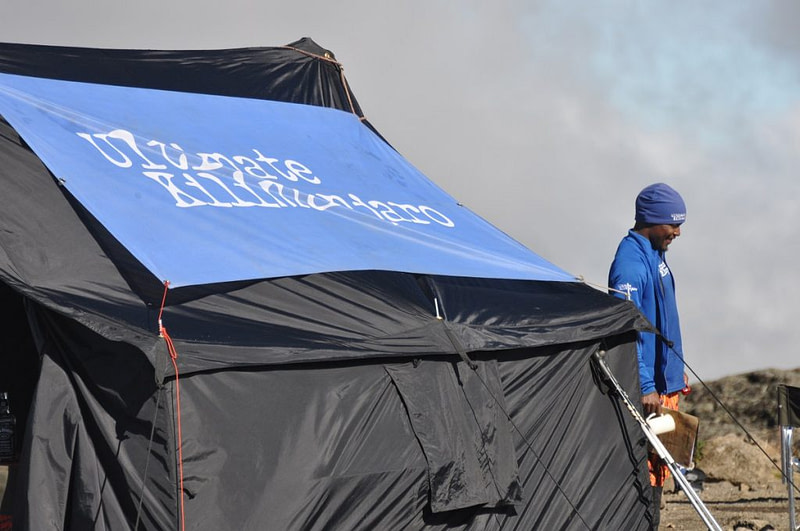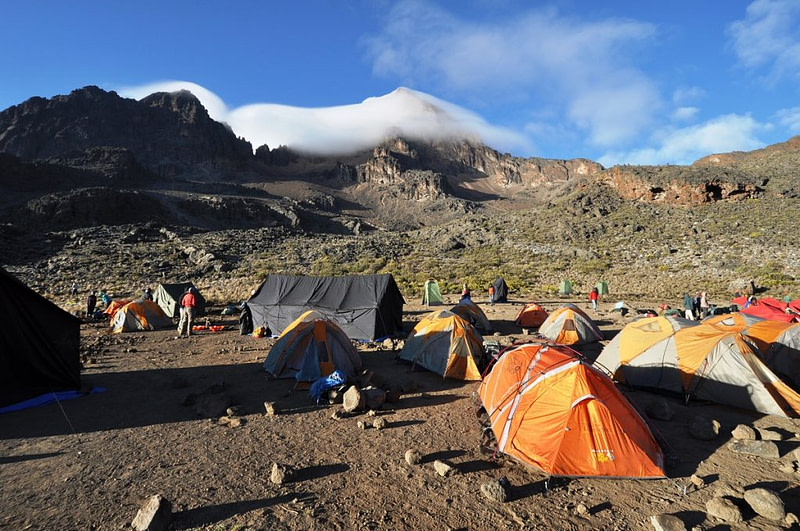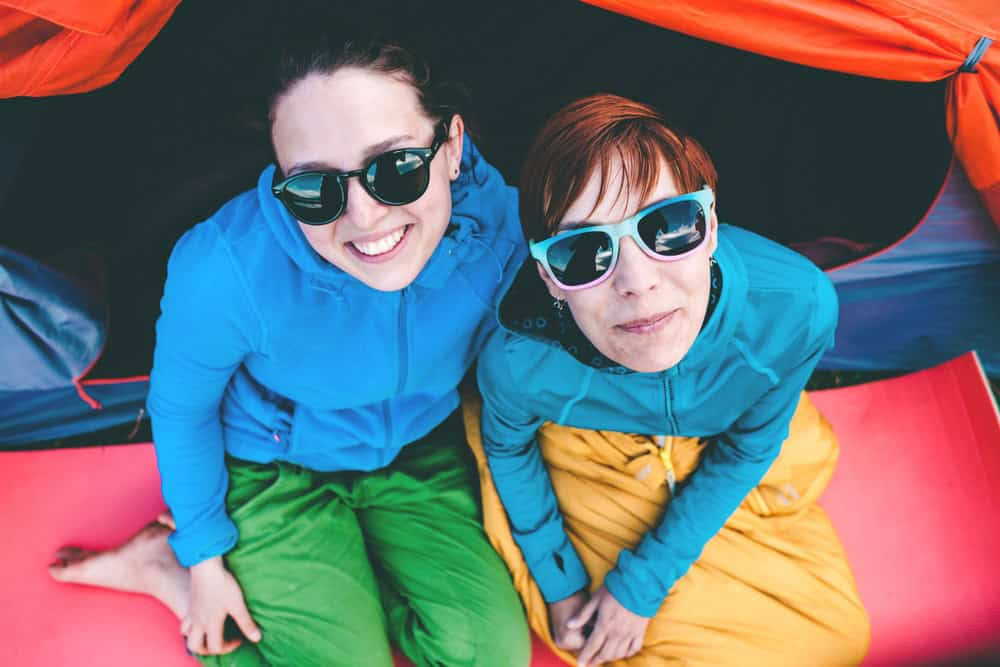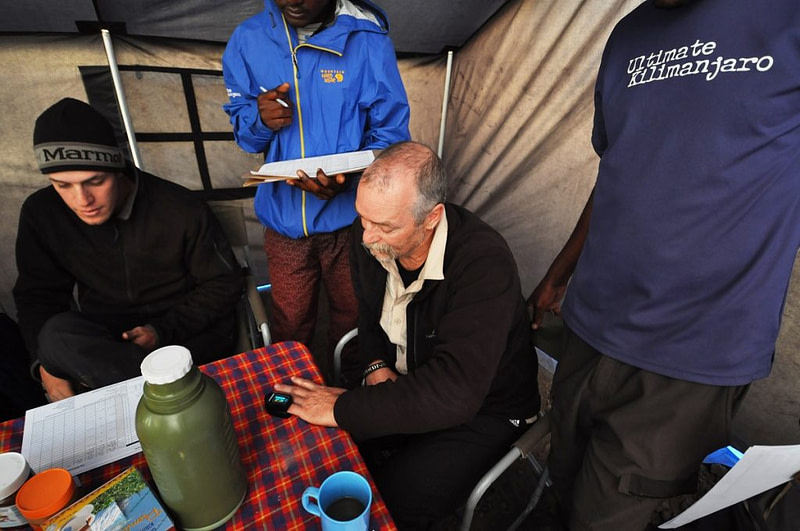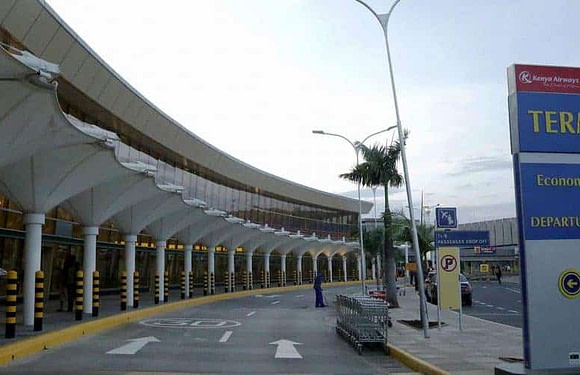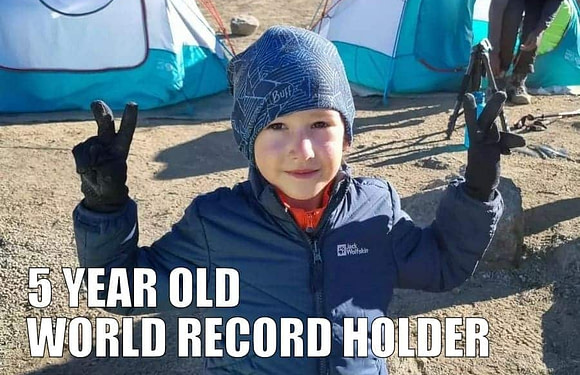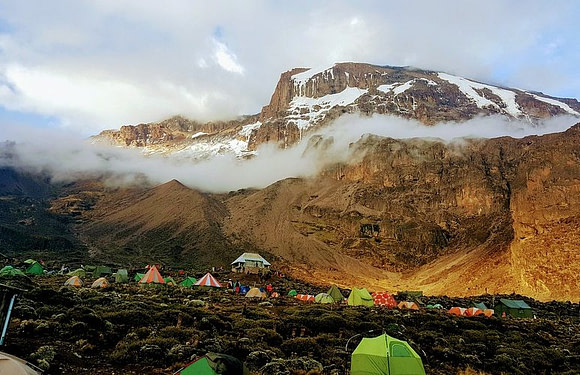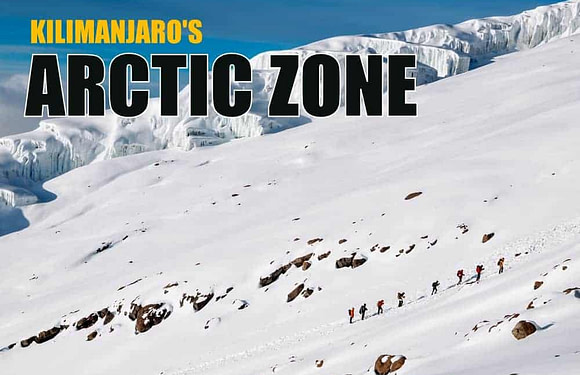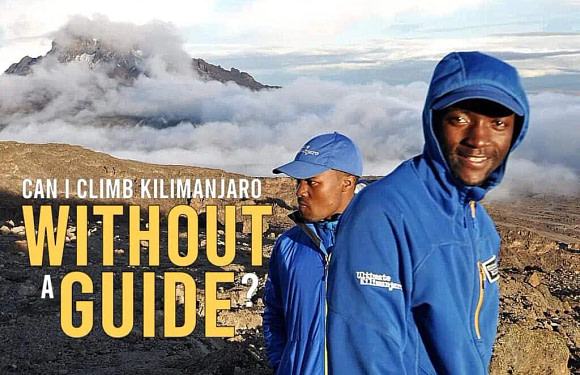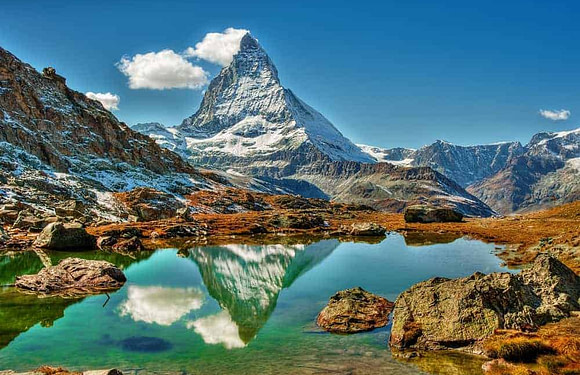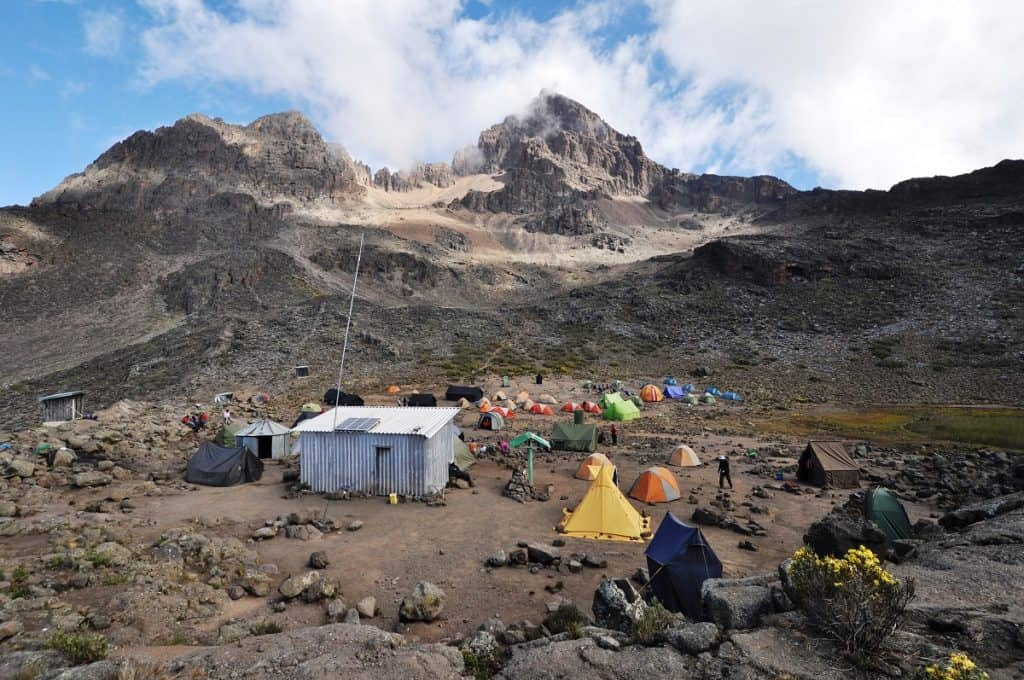
You’ve spent the past six hours hiking along Mount Kilimanjaro’s well established trails. And coming over a ridge, you see a sea of color in the distance – tents.
“That is the campsite,” your Ultimate Kilimanjaro® guide announces.
This scenario plays out day after day while climbing Kilimanjaro. Though most of the dayhikes on the mountain are not strenuous, being on your feet for that many hours is enough to make most people’s feet sore. The thought of relaxing for the rest of the afternoon and evening is a relief.
Usually, climbers stroll into the campsites in the early afternoon to mid afternoon (between 2:00 PM to 4:00 PM) depending on the day. The porters have already been here for hours, busy preparing for your warm welcome.
Climbers are not expected to do any chores here – no setting up camp, no fetching water, no food preparation and no cleaning up. That is the job of our hardworking porters.
By the time the trekking party arrives, your sleeping tents have been set up, complete with comfortable sleeping pads and duffel bags inside. The private toilet tent stands a bit away from the main site. And the mess tent, draped with a royal blue Ultimate Kilimanjaro® banner, beckons you inside for hot tea, coffee and snacks such as popcorn, peanuts, and chips.
How do people normally spend free time on the mountain?
Some climbers hang around in the mess tent to socialize. Others take photos around the campsite. Some lay in the tent to rest, listen to music on their headphones, or read a book. All of these activities are fine, but we do have some recommendations on this front.
Your body is working harder than you may think to acclimatize, so taking it easy and allowing the body to recover is ideal.
When you get to camp, take your boots off and let your feet breathe. Lay down for at least 20 minutes. Prop your feet up on your duffel bag so they are elevated. This will help reduce some of the natural swelling. It drains the blood out out of your lower legs so that fresh blood can be pumped back into them. This may also reduce soreness by preventing lactic acid buildup.
Keep your body warm at all times at the campsite – you never want to feel cold. The reason behind this is that you want to put your body in the best condition so it can deal with recovery and acclimatization. Adding unnecessary stressors, such as being chilly, only hampers the process.
If you are wearing clothing that feels cold and clammy, change into something dry. When you are ready to get out of your tent, put on your fleece pants, a warm jacket and hat. If you have brought a separate pair of camp shoes (they are optional), switch into those.
Dinner is served around 6:00 to 6:30PM everyday. During meal times is when you really get to know the others in your group. This is where friendships are born. Because we have climbers come together from all over the world, these gatherings are quite interesting as different cultures are meshed. Mess tents are typically filled with laughter, joy, and plenty of good food.
As dinner wraps up, your team of guides will come into the tent to give a briefing about the next day’s events. This is includes the time of the wake up call, when breakfast is served, when you will leave camp and how much hiking is in store. This is the time to ask questions if you have any.
The guides will also perform twice daily health checks (each morning and night) in the mess tent. With a pulse oximeter, they will take oxygen saturation readings from every climber. At the same time, they ask a set of questions known as the Lake Louise Scoring System. The oxygen readings and questionnaire responses are logged to evaluate changes in your acclimatization.
Soon thereafter, most people are ready for bed, though it is only around 8:00 PM. While some people say goodnight and retire into their tents, others will try to stay up later in hopes that they can push their body’s wake up time later into the morning.
Due to time zone changes plus early bedtimes, most people end up wide awake in the wee hours of the morning. This is normal, even expected, especially during the first few nights. People tend to sleep better with each successive day, despite that the camp elevation is also increasing. This is a sign that they are acclimatizing well. Ironically, just as people start sleeping throughout the entire night, they are woken up at midnight – it’s time to begin the summit climb.
Overall, for most people it does not feel like there is excessive downtime. We’ve never heard clients say they were bored at the campsite. Taking a respite is well deserved and probably very beneficial to the experience. By spending a few hours alone, you can think about the day’s activities, reflect on your life goals, and appreciate your current relationships. Often people come away from the mountain with new, life-changing insights. These discoveries mostly occur in these quiet hours.



















































